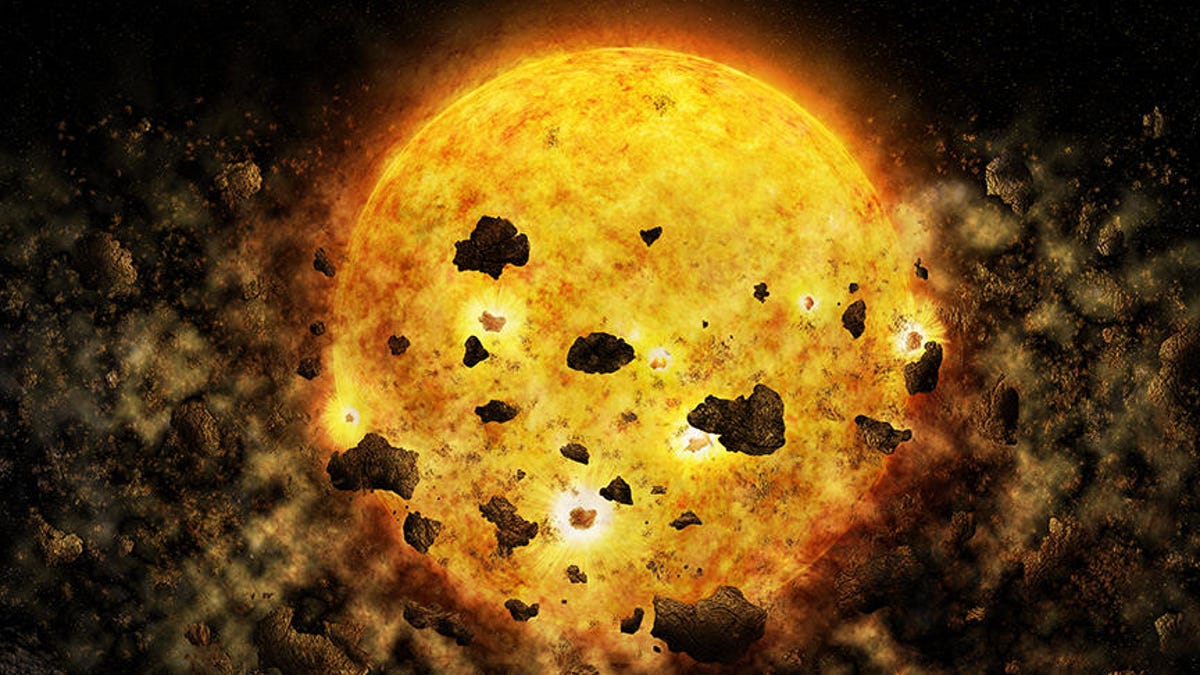NASA may have glimpsed a star 'devouring a planet' for the first time
There's a star, man, waiting in the sky. It's likely to have eaten a planet in recent times.

Around 450 light years from Earth, a young star just feasted on a planet-sized meal.
At least, that's what a team of astronomers believe occurred at RW Aur A, a star just a few million years old that has been studied by astronomers since 1937.
In star years, "a few million years old" makes RW Aur A very young, potentially enabling us to learn about how stars and planets interact in the early phases of their development. Over the past 80 years, the light from RW Aur A dimmed periodically "every few decades for about a month," according to NASA.
However, as early as 2011, the light has dimmed more frequently and for longer periods. A team of researchers turned the Chandra X-ray Observatory toward the star over a five year period to get a better understanding of what exactly was happening.
Chandra, a space telescope first launched in 1999, is extremely sensitive and can detect the intensity of X-rays emitted by the young star. Typically, young stars like RW Aur A are surrounded by thick disks of debris and gas, which alter the intensity of the X-rays the star emits. By allowing Chandra to observe RW Aur A, data can be obtained that helps scientists work out what type of material is present in the disks.
Findings published in The Astronomical Journal on July 18 show that Chandra was able to detect an abundance of iron surrounding RW Aur A. Previous measurements did not show iron at such high levels, so the research team had to grapple with where it may have come from.
Their explanation? Planetary collisions.
The team speculates that this iron excess comes from a planet -- or planetesimals -- colliding with one another in the space surrounding RW Aur A. If one of the planets is rich in iron, the collision would cause that iron to be spewed into space, enriching the corona of the hungry young star and causing the abundance that they see.
"If our interpretation of the data is correct, this would be the first time that we directly observe a young star devouring a planet or planets," says Hans Guenther, who led the study out of MIT's Kavli Institute for Astrophysics and Space Research.
There's also the possibility that RW Aur A's partner star, RW Aur B, may pass by close enough that it rips particles of iron from the disk that surrounds RW Aur A, which falls into the star.
The next step will be investigating how the X-ray signatures from RW Aur A differ over time, providing clues as to the type of the planetary collision that may have occurred or perhaps revealing an entirely new reason for the iron abnormalities.
But, hey, that's not as exciting as a planet-on-planet tackle, is it?
Culture: Your hub for everything from film and television to music, comics, toys and sports.
Tech Enabled: CNET chronicles tech's role in providing new kinds of accessibility.

